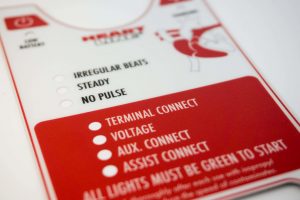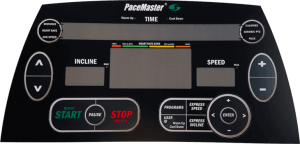Graphic overlays are often considered the “face” of your product because they’re the product's top layer and viewing surface. They are an integral part of your user interface design because they tell the user exactly how to operate the device. Graphic overlays can also be customized to your specific needs with different types of materials. There are many material options to choose from depending on your application and environment, so how do you know what material is best for you? Here is a comprehensive breakdown of the most common material types for graphic overlays.
1. Polyester Overlays:
Polyester overlays are the most frequently utilized material for graphic overlays as it is the most commonly used plastic in the world. Polyester overlays have good chemical resistance and can withstand higher temperatures compared to the other materials commonly used to produce graphic overlays.
Polyester overlays are most commonly used in applications where the product may be exposed to chemicals, harsh environments, temperature extremes, or cleaning agents. They’re also the most durable material that can be used even though their thickness only goes up to approximately .010”.
Common Industries Polyester Overlays are Used In:
- Industrial Controls
- Health & Wellness
- Fire & Safety
 2. Polycarbonate Overlays:
2. Polycarbonate Overlays:
Polycarbonate overlays are a common material used for graphic overlays when impact resistance and transparency are required, as they are naturally transparent materials. Polycarbonate material is known for being easy to laser cut, die-cut, screen print, and texturize. Unlike polyester overlays which are naturally chemical resistant, polycarbonate overlays need a hard coat protection to be applied to the top layer to increase the chemical resistance.
Standard polycarbonates can also be subjected to heat; however, they can only be exposed to a temperature of approximately 220 degrees Fahrenheit. Another form of polycarbonate overlay, known as an FR or Fire Retardant polycarbonate, can help to extinguish fires the overlay is exposed to or help with the temperature extremes the overlay may be placed into. When it comes to impact resistance for an overlay, polycarbonate overlays are hands-down the best material that can be used.
Common Industries Polycarbonate Overlays are Used In:
- Aerospace (Specifically flame retardant polycarbonate)
- Automotive
- Safety
- Industrial
- Automotive
3. Acrylic Overlays:
Acrylic overlays are the least commonly used material for graphic overlays, but they’re another type of plastic overlay that can be utilized. Acrylic overlays gain popularity because they are clear and lightweight. It is also more transparent than typical glass and is nearly 50% lighter. If your main priority of an overlay is to diffuse or transmit light, then an acrylic overlay would be the best option for you. Acrylic overlays are strong and do not bend easily, which can help provide stiffness and make your display durable.
Common Industries Acrylic Overlays are Used In:
- Medical
- Automotive
Other Material Options for Graphic Overlays
There are many other material options for your graphic overlays. Download our material selection chart for a comprehensive list of all material options.
Download our Material Selection Chart
Download Now
No matter your application specifications, we have the material to suit your product best. Our experienced and educated team of engineers at BTI is willing to work with you to find what material would work best for you! Reach out to our team for any questions you may have or to get your next project started. We look forward to hearing from you!
